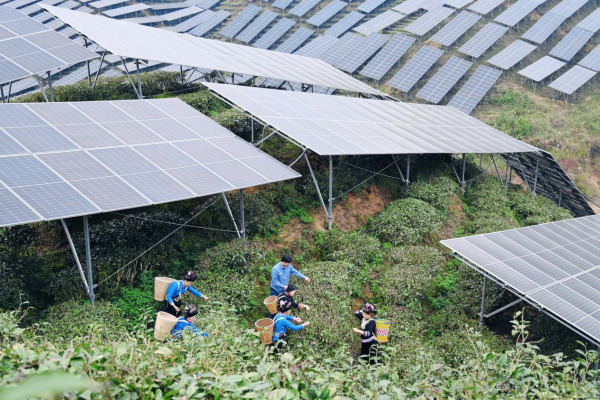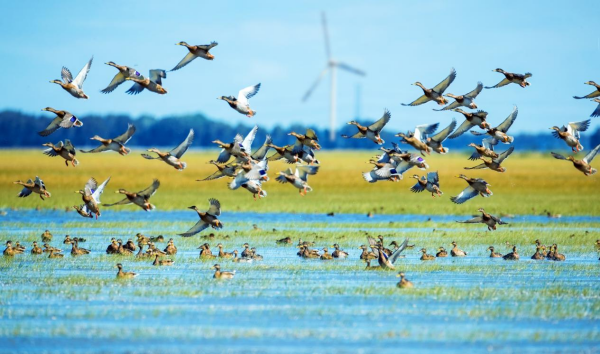The year 2025 marks the 20th anniversary of the concept that “lucid waters and lush mountains are invaluable assets”. Over the past two decades, China General Nuclear Power Corporation (CGN) has focused on developing clean energy to support China’s green transformation.
By expanding nuclear power, solar, and photovoltaic industries, CGN has played a key role in advancing the nation's shift towards green energy, while also promoting ecological restoration and sustainable development. The company has integrated economic and ecological benefits and provided innovative solutions for biodiversity protection.
Driving clean energy for green development
CGN has always supported China’s “dual carbon” goals. It currently operates 28 nuclear power units and over 700 new energy stations nationwide, with a global clean energy capacity of over 100 million kilowatts. Since the Daya Bay Nuclear Power Station started operation in 1994, CGN has generated over 3 trillion kilowatt-hours of clean energy, cutting carbon emissions by more than 2.4 billion tons. On April 29, 2025, CGN’s Daya Bay Nuclear Power Base became the first nuclear plant in China to surpass 1 trillion kilowatt-hours in total power generation.

An aerial view of the Daya Bay Nuclear Power Base [Photo/sasac.gov.cn]
Integrating new energy with ecological restoration
From desert reclamation to marine ranching, CGN explores innovative ways to integrate clean energy with ecological protection. In the Hotan prefecture, CGN has created a 1647-acre “photovoltaic + agriculture” project, improving biodiversity and local landscapes. In the Kubuqi Desert, CGN uses a combined model of “tree planting + grass planting + breeding + power generation”, building six photovoltaic stations and reclaiming 5601 acres of desert. In Yunnan, CGN’s “under-panel economy” model integrates photovoltaic power with local agriculture, forestry, and medicinal crops, creating sustainable rural development. In Pingtan, Fujian Province, CGN’s offshore wind farm is restoring fish populations and maintaining marine biodiversity.

CGN’s 150MW tea-photovoltaic complementary project in Donggan, Yunnan, where tea farmers harvest fresh tea leaves under photovoltaic panels [Photo/sasac.gov.cn]
Creating a culture of ecological protection
CGN combines clean energy development with biodiversity conservation. The company launched China’s first biodiversity protection report based on natural capital accounting, setting a strong example for integrating biodiversity into business practices. It has implemented various biodiversity protection projects, including coral conservation at Daya Bay, mangrove protection at Fangchenggang, and supporting the protection of the endangered Chinese white dolphin at Yangjiang Nuclear Power Station. Additionally, CGN has created migration corridors for nearly 300 bird species at its Xingkai Lake Wind Farm in Heilongjiang Province.

Migratory birds visit the Halahai Wind Farm in Heilongjiang every year, thanks to successful wetland protection efforts. [Photo/sasac.gov.cn]
(Executive editor: Yuan Ting)